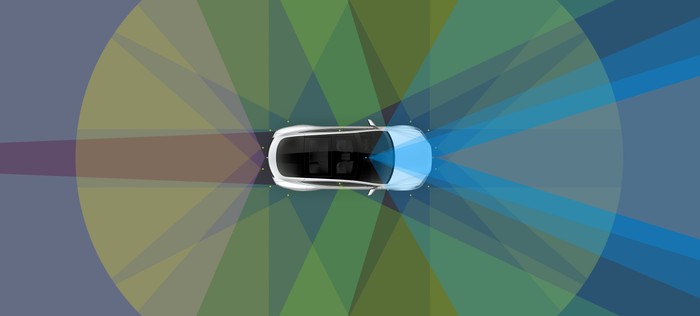
Researchers use 'small stickers' on road to send Tesla Autopilot off course
The car was tricked into steering into the opposing traffic lane.
Researchers at the Tencent Keen Security Lab have figured out how to use stickers on the road to send Tesla's Autopilot off course.
The team initially concluded that Autopilot's lane-recognition system "has good robustness," presumably because Tesla uses many abnormal lanes, such as broken or occluded lines, in their training model to keep the system on track when real-world markings are less than perfect.
Autopilot's strength in recognizing imperfect lane markings is said to make the system more sensitive to certain types of misinformation, however. With just three seemingly inconspicuous stickers placed in the middle of a lane, the system was tricked into changing course into the opposing lane. In a real-world scenario, such an 'attack' could make the car go the wrong way against traffic.
"Misleading the autopilot vehicle to the wrong direction with some patches made by a malicious attacker, in sometimes, is more dangerous than making it fail to recognize the lane," the authors write in the report. "This kind of attack is simple to deploy, and the materials are easy to obtain."
The researchers hope the study will encourage automakers to develop even more robust self-driving systems to protect against safety threats. In Tesla's case, the team suggests Autopilot should be revised to include a system to recognize the reverse lane and prevent the car from accidentally going the wrong way.
Several real-world Autopilot accidents have been blamed on poor lane markings that were not properly interpreted by the machine vision algorithms, sometimes sending a car veering toward a concrete barrier.